Your Guide on How To Climb Huayna Potosi
If you’re dreaming of conquering a 6,000-meter mountain but aren’t quite an expert mountaineer, Huayna Potosi in the Bolivian Andes might be the perfect challenge. This guide will take you step-by-step through our journey and provide practical advice on how to prepare for your own adventure up this “easiest” 6,000m peak.

Overview of Huayna Potosi
Huayna Potosi, standing at 6,088 meters, is considered one of the more accessible high-altitude climbs in the world. However, make no mistake—despite its reputation as the “easiest” 6,000-meter climb, it is still an immense physical and mental challenge. The climb requires no technical expertise, but the altitude, cold temperatures, and steep glacier paths demand endurance, mental fortitude, and preparation.
The climb typically takes two to three days, and most tour companies in La Paz offer guided trips. The itinerary usually includes a day of glacier training, followed by an ascent to high camp and the final summit push, which begins in the middle of the night.
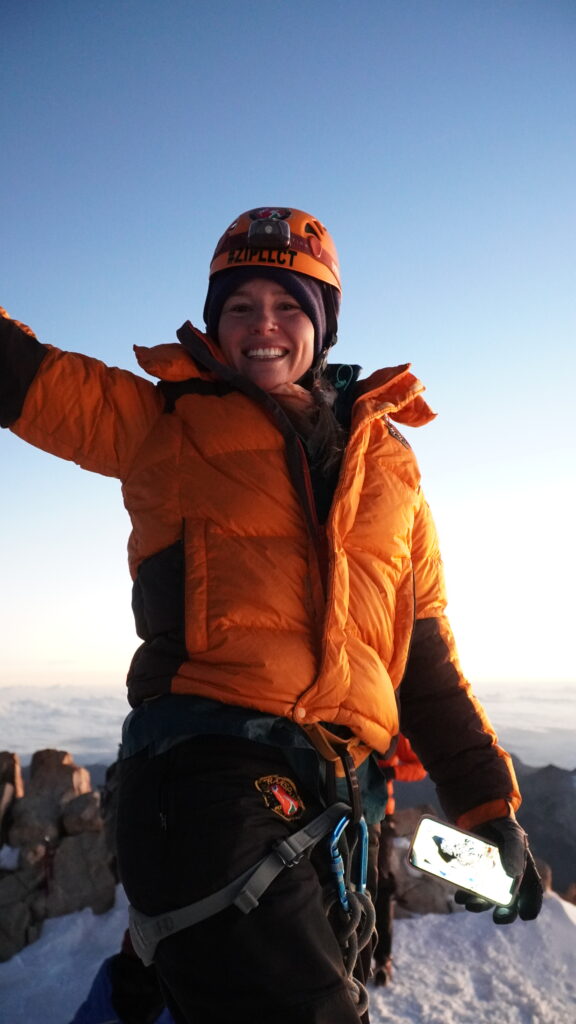

Preparation: What to Know Before You Go
Training and Fitness
While you don’t need to be a seasoned climber, you should be physically fit and mentally prepared for long hours of hiking in extreme conditions. Cardiovascular endurance is crucial, as the air at 6,000 meters contains significantly less oxygen, which will make breathing difficult, even when at rest.
We were complete novices to mountaineering, and Huayna Potosi was our first major summit. Despite this, we managed to complete the climb after some glacier training and by maintaining a strong, determined mindset throughout the journey.

Altitude Acclimatization
It’s essential to spend a few days in La Paz (3,650m) or nearby locations to acclimatize before attempting Huayna Potosi. Altitude sickness can affect anyone, regardless of fitness level, and can quickly turn a dream climb into a nightmare. Symptoms include headaches, nausea, dizziness, and shortness of breath.
Consider doing some acclimatization hikes to places like the Valle de la Luna or Chacaltaya Mountain to give your body time to adjust to the higher altitudes before tackling Huayna Potosi.
Day 1: Glacier Training and Base Camp (4,700m)
We started our adventure by driving from La Paz to the base camp, which is located at 4,700 meters. The drive took about two hours, and by the time we arrived, we were already feeling the effects of the altitude. After a quick lunch, we began our glacier training session.
Glacier Training
Training involves learning how to walk with crampons and use an ice axe. These skills are essential for the final summit push, where the terrain becomes steep and icy. The crampons help you grip the ice, while the ice axe can be used for self-arrest in case of a fall.


Our guide showed us how to walk sideways like a crab on steep slopes, how to zigzag on less steep terrain, and how to rope ourselves together for safety. This was our first time using this equipment, and while intimidating at first, the training helped us feel more confident about the upcoming climb.
Base Camp Conditions
The base camp is basic but functional. Expect rustic dormitory-style rooms with old mattresses, no showers, and shared, non-flushing toilets. We were glad to have brought our own sleeping bags, as the blankets provided were not the cleanest. Despite the simplicity, the camp offers stunning views of Huayna Potosi, which looms in the distance, covered in snow and looking more intimidating than ever.


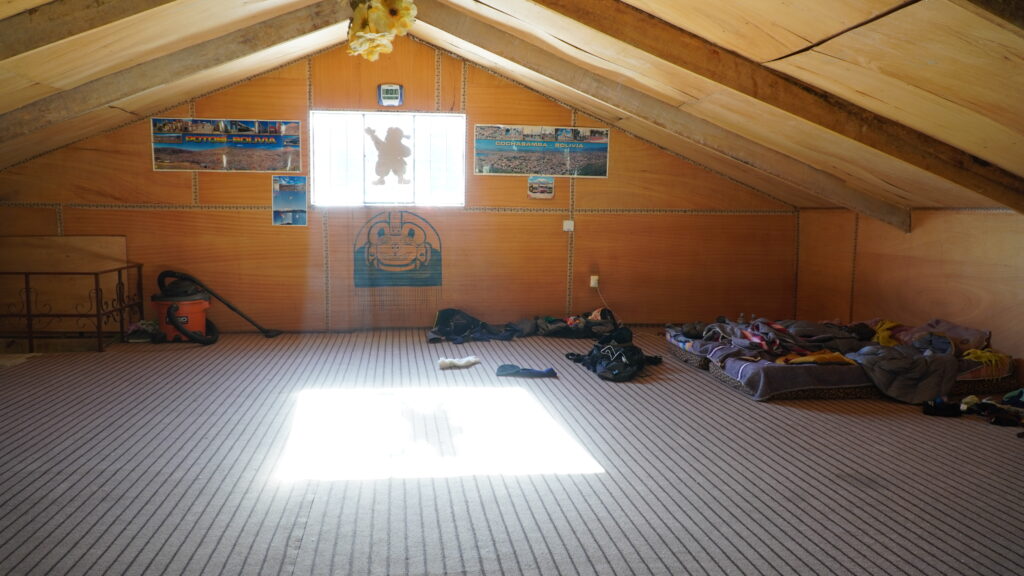
Pro Tip: Bring your own toilet paper! Our tour company didn’t provide it, but we always travel with some just in case. Also, pack plenty of snacks to keep your energy levels up throughout the day.
Day 2: High Camp (5,200m)
On the second day, we began our hike to high camp, located at 5,200 meters. The trek took about two and a half hours, and while the distance wasn’t far, the altitude made it incredibly challenging. Every step felt like a marathon, and we had to stop frequently to catch our breath.
The Route to High Camp
The trail from base camp to high camp is steep and rocky, zigzagging up the mountain. Loose rocks make it difficult to keep your balance, and the higher you go, the thinner the air becomes. It’s essential to pace yourself, stay hydrated, and take frequent breaks.

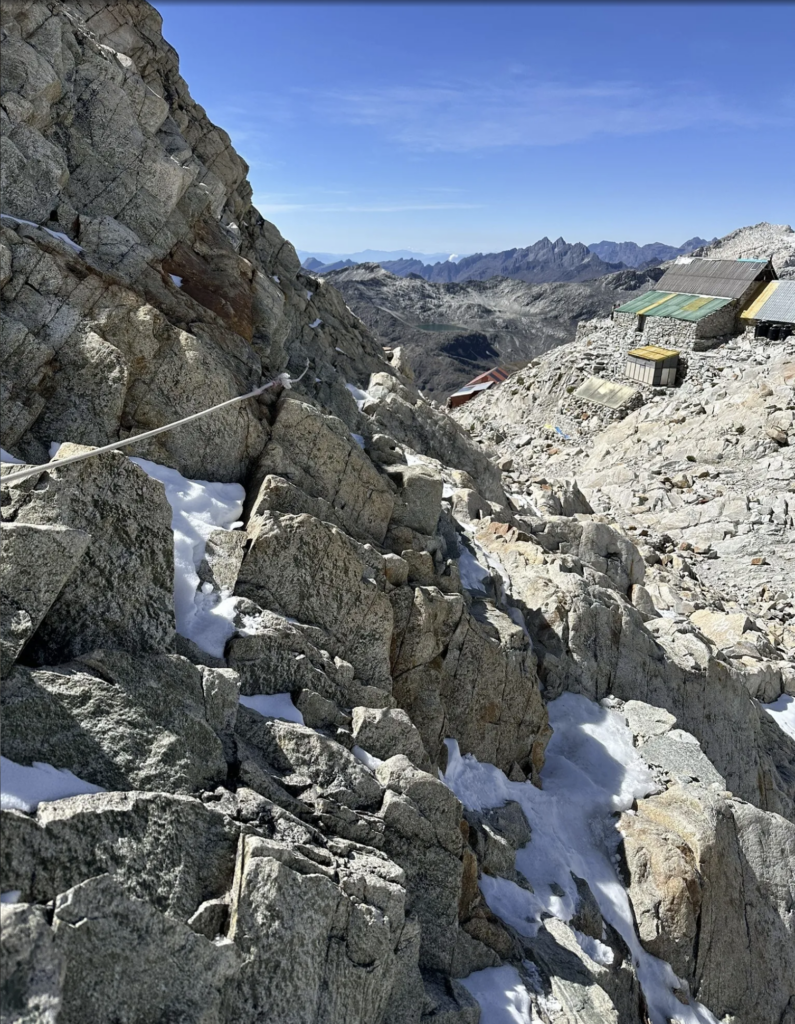
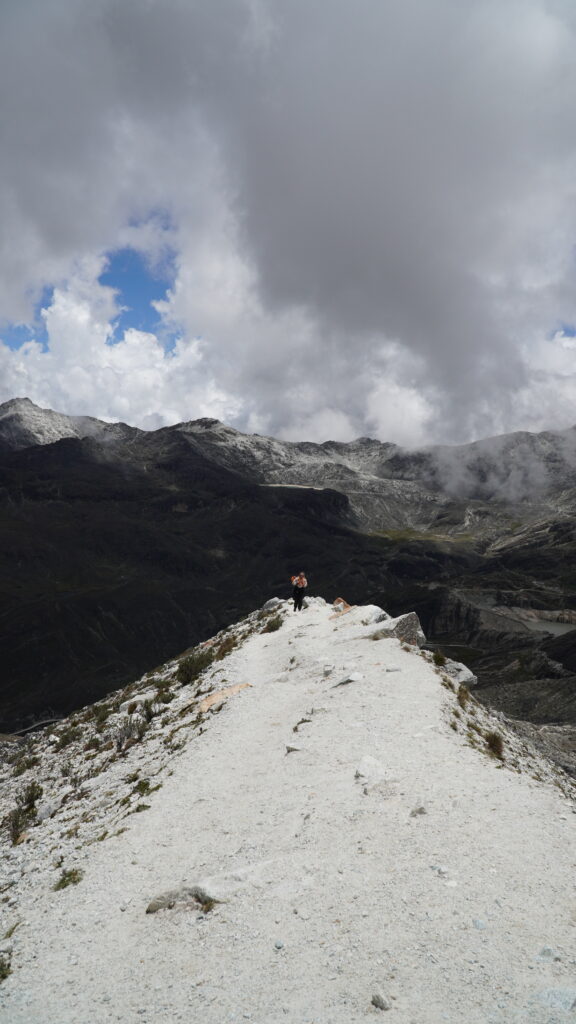
As we hiked, we couldn’t help but reflect on the history of the mountain. Our guide told us about previous failed attempts to summit Huayna Potosi, including a group of German climbers who tragically lost their lives in 1877. This story served as a sobering reminder of the dangers that come with mountaineering, even on a so-called “easy” mountain.
High Camp Conditions
High camp was a welcome sight after the grueling hike. It’s slightly more comfortable than base camp, with warmer rooms and slightly better beds. We arrived in the afternoon, giving us plenty of time to rest before the final ascent. The camp is located just below the glacier, offering breathtaking views of the surrounding mountains and the valley below.
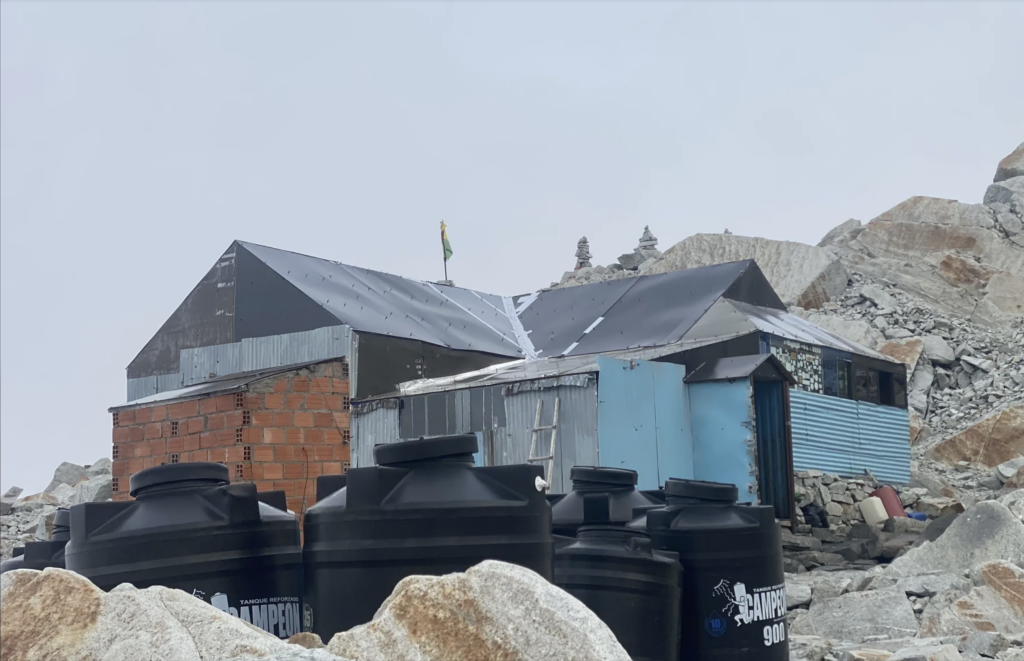
We spent the afternoon relaxing, sipping hot cocoa, and mentally preparing for the final push. The altitude was starting to take its toll, and we were advised to rest as much as possible, as sleep would be difficult due to the altitude.
Pro Tip: Bring a good book or a journal to pass the time at high camp. There’s not much to do, and the anticipation of the summit can make the hours feel long.

Day 3: The Summit Push (6,088m)
The final summit push begins around midnight. We were woken up at 11:30 p.m. after only a couple of hours of restless sleep. It was pitch black, freezing cold, and the nerves were high as we geared up for the climb.
The Climb
The first section of the climb involves walking in the dark with headlamps, following a steep, icy path up the glacier. Every step feels like a challenge as your body struggles to adapt to the thin air and freezing temperatures. We roped ourselves together for safety and slowly made our way up the glacier, with our guide leading the way.

After several hours of climbing, we reached the steepest and most technical part of the climb—a near-vertical section of ice that required us to use both crampons and ice axes. This part of the climb was the most terrifying but also the most exhilarating. Every muscle in our bodies was burning, and the thin air made it feel like we were breathing through a straw.

The Summit
Finally, after about five hours of climbing, we reached the summit just as the sun was rising. The view from the top was unlike anything we had ever seen. We were standing above the clouds, looking out over the vast expanse of the Bolivian Andes. It was a moment of pure euphoria, and all the physical and mental challenges of the climb melted away as we took in the beauty of the world from 6,088 meters.

The descent was just as challenging as the ascent, but by mid-morning, we were back at high camp, exhausted but triumphant.



Final Thoughts: Is Huayna Potosi Right for You?
Huayna Potosi is a fantastic option for adventurers looking to push their limits without needing technical climbing experience. However, it is by no means an “easy” climb. The altitude, cold, and physical demands are intense, and proper preparation is essential. But if you’re up for the challenge, the reward is an unforgettable experience and the satisfaction of conquering a 6,000-meter peak.
Tips for Success:
- Acclimatize: Spend at least 3-5 days in La Paz or nearby before the climb.
- Stay hydrated: Drink plenty of water to help combat altitude sickness.
- Go slow: Pace yourself, especially during the summit push. The altitude will make everything feel twice as hard.
- Hire a guide: This is not a climb to attempt solo. A knowledgeable guide will make all the difference.
- Enjoy the journey: The views, the challenge, and the sense of accomplishment make Huayna Potosi a once-in-a-lifetime experience.
Huayna Potosi may be dubbed the “easiest” 6,000-meter mountain, but it’s a feat that will challenge and inspire even the most adventurous of souls. Happy climbing!